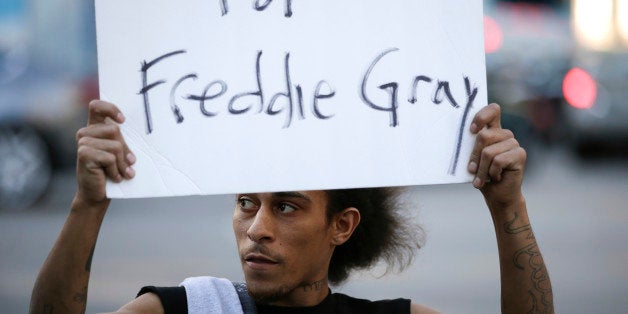
Images of violence and riots in Baltimore have flooded television news programs and dominated the front pages of newspapers the past few days. But according to students in Kelly Durkin's 10th-grade English class, such images do not accurately characterize the city they know and experience every day. The real Baltimore is a place where neighbors and community members work hard and support each other, these students say.
On Wednesday, Durkin, a teacher at public charter school Coppin Academy, asked her students to write in-class essays about what they want the outside world to know about their city. The assignment was inspired by Twitter hashtag #TheRealBaltimore -- which many people have used this week to spread positive messages about the city -- and came the day after Baltimore City Public Schools canceled classes because of local unrest over the death of Freddie Gray. Gray, a 25-year-old black man, died on April 19 after sustaining severe spinal injuries while in police custody.
"[The students] want people to see that Baltimore is very hard-working," Durkin said. "I keep hearing them talk about community -- they talk about how people help people when they're struggling."
After seeing reports of local teens initiating violence against police officers on Monday afternoon, Durkin said her students expressed concern that the outside world perceived them as "thugs," "dangerous" and "bad."
"Students do not condone what happened on Monday," she said. "They are embarrassed by it and upset by it, but they feel like it came from a real place of anger and hurt and that is something they want attention drawn to."
"There’s a lot of animosity I think in general between citizens and police but I'm hearing students say, 'We can't judge all police, just the same way people can't judge all of us. There may be some bad officers, but there are also good officers,'" Durkin continued.
Below are some the students' essays about #TheRealBaltimore, which Durkin provided to The Huffington Post.
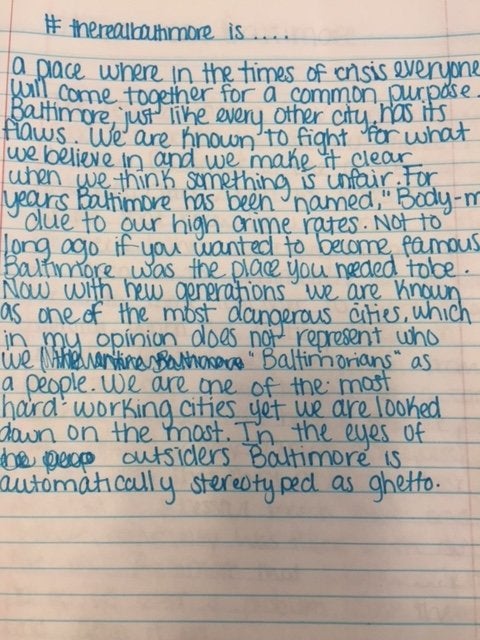
"#TheRealBlatimore is... a place where in the times of crisis everyone will come together for a common purpose. Baltimore, just like every other city, has its flaws ... We are one of the most hard working cities yet we are looked down on the most. In the eyes of outsiders Baltimore is automatically stereotyped as ghetto."

"#TheRealBaltimore is bright, youthful, caring, diverse and hardworking. I believe it is bright because there is so much to do in Baltimore other than sell weed, drop out and get locked up."

"#TheRealBaltimore is about when people get together and have fun."
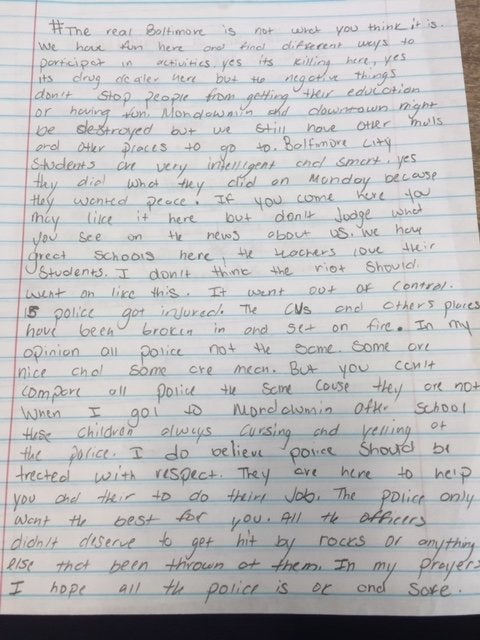
"#TheRealBaltimore is not what you think it is. We have fun here and find different ways to participat [sic] in activites ... I do believe police should be treated with respect."
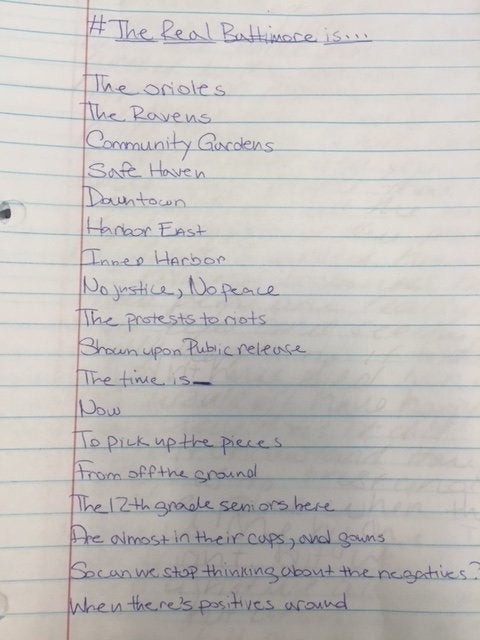
"The 12th grade seniors here are almost in their caps, and gowns. So can we stop thinking about the negatives? When there's positives around"
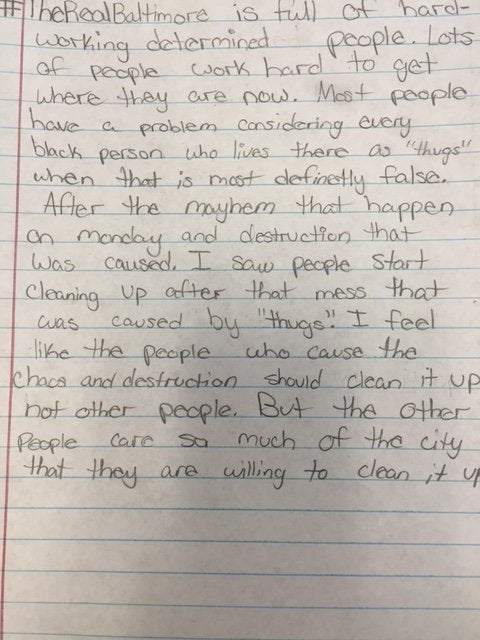
"#TheRealBaltimore is full of hard-working determined people. Lots of people work hard to get where they are now."
